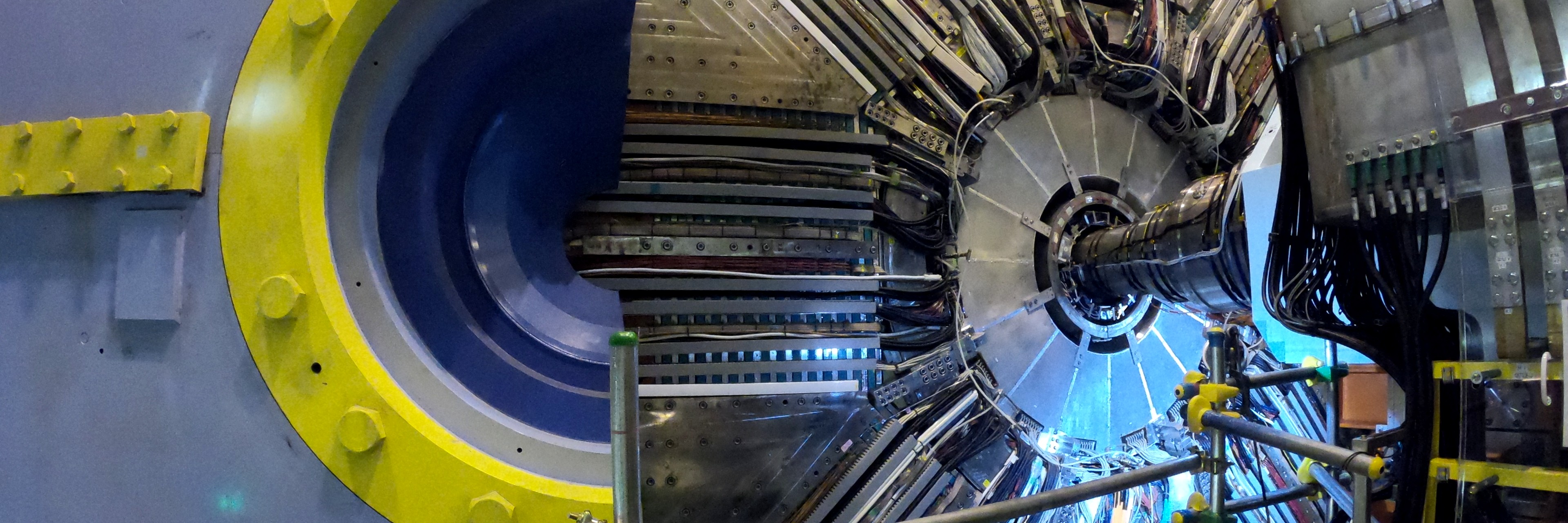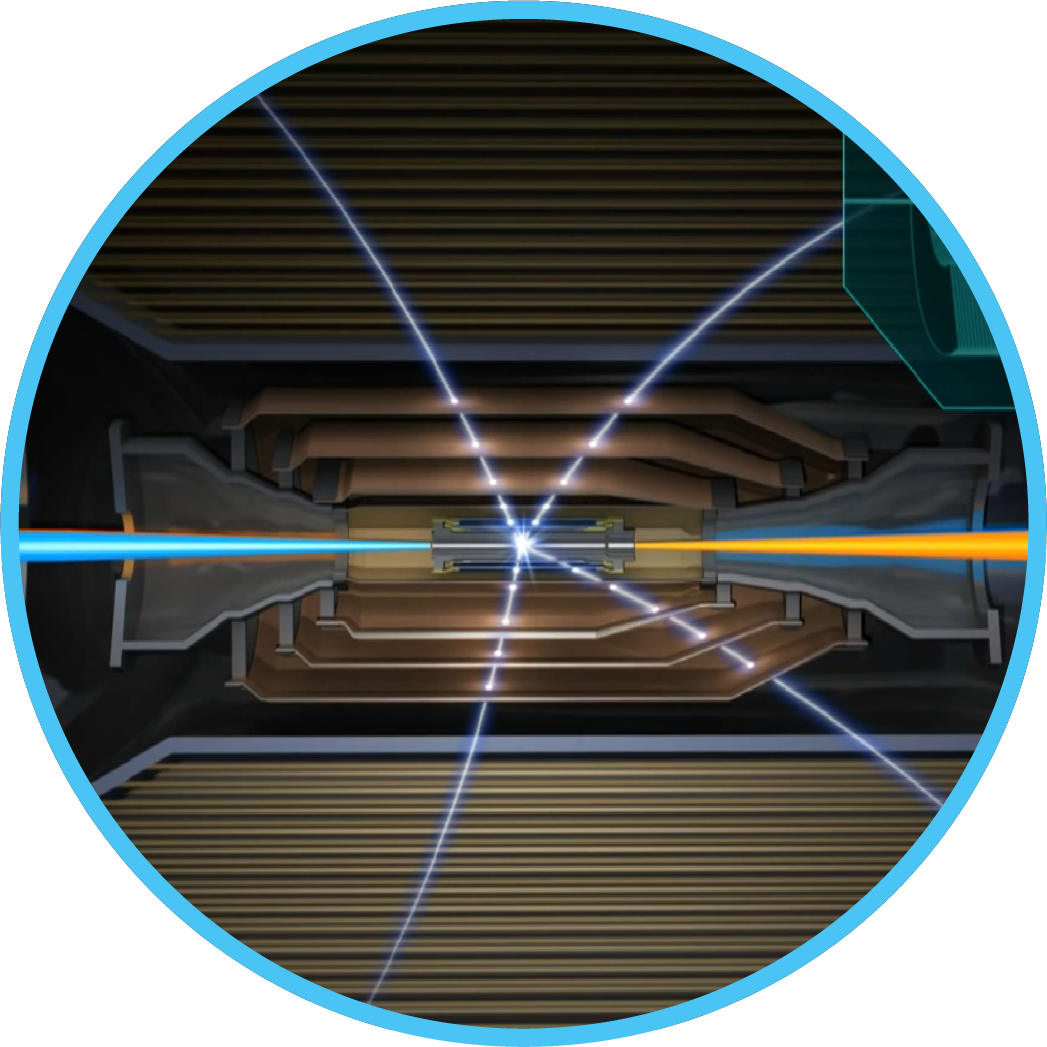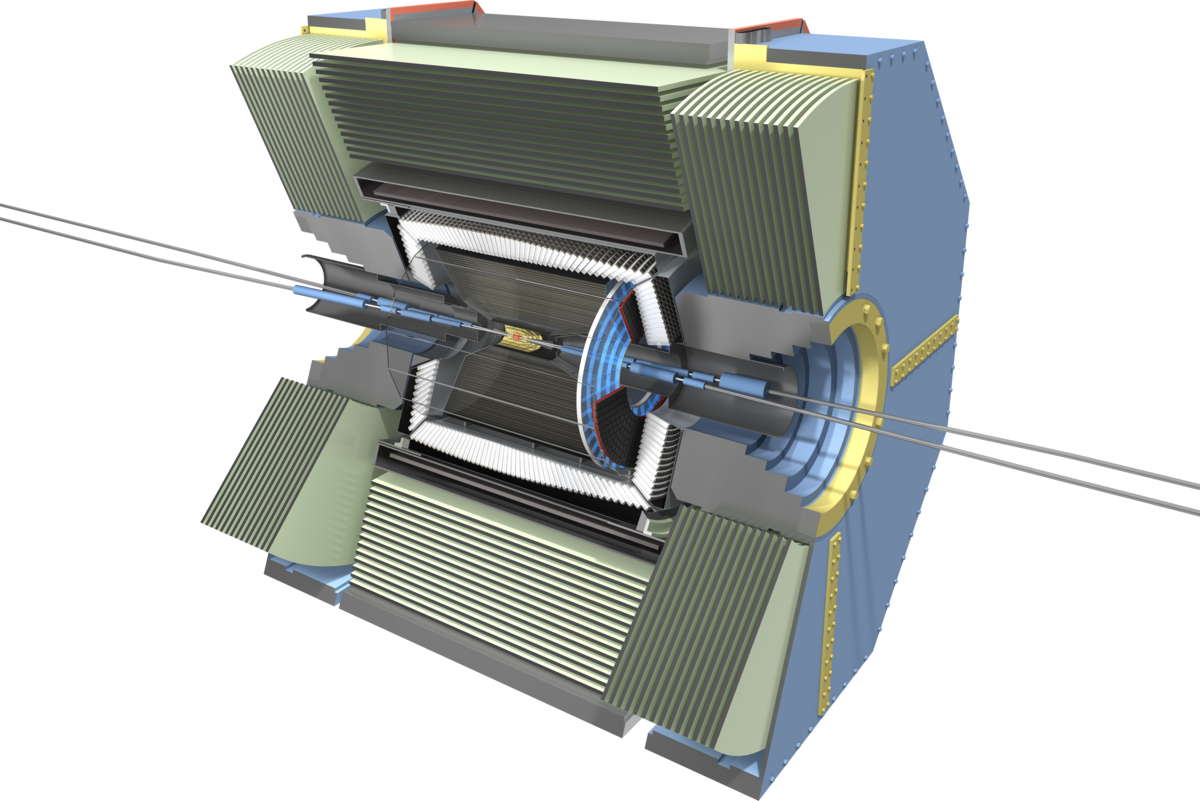The powerful new particle accelerator SuperKEKB replaces its predecessor model KEKB (1998-2010) since in 2019. The high luminosity of the SuperKEKB leads to a significantly increased data rate and amount compared to the predecessor model, and therefore also required an upgrade of the detector to accommodate and process this amount of data. Consequently, the older Belle detector was replaced by the more powerful Belle II detector.
The particle beams of matter (electrons) and their antiparticles (positrons) colliding in the SuperKEKB are expected to produce a collision rate up to 30 times higher than its predecessor. The particles generated in the collisions and their degradation products will be measured and analyzed in the Belle II experiment. For this purpose, various detector components are arranged cylindrical around the beamline. The detector components can detect the individual degradation end products of the decay (such as electrons, muons, pions and other particles). The entire Belle II detector is about 10 m wide, equally high and weighs a total of 1500 tons.
The high-resolution VerteX detector system (VXD) of Belle II can be used to detect very transient particle decays, such as those of B mesons with lifetimes on the order of picoseconds (one trillionth of a second). A major contribution of the German groups are the two innermost layers with the highest spatial resolutions.
After passing through the vertex detector, the generated particles travel through the central drift chamber. This chamber is filled with gas, which gets ionized by the particles, so that detectable traces are generated. Based on these traces, the trajectories of the particles and their momentum can be derived.
Neutral particles are detected with the electromagnetic calorimeter, which consists of 8736 thallium-doped cesium iodide crystals of 6 x 6 x 30 cm3. Mainly, photons and uncharged pions (π0's) from B-meson decays are detected here. A particularly high energy resolution is important to be able to read out signal and background events exclusively from the mass distribution: To identify background events more accurately, the readout electronics operate at frequencies around 30 kHz, 100 times higher than the frequency rates of the predecessor detector.
The muon is an elementary particle like the electron, but has a much larger mass and therefore loses far less energy as it moves through matter and consequently penetrates deeper into it. The K-long (KL), a state consisting of a superposition of the neutral kaon with its antiparticle, also has a long lifetime and hence escapes internal detectors. Both the muon and the KL travel extremely long distances within the Belle II detector - which is why these two, and virtually only these two particles, are detected in the KLM detector.
Belle II uses high-performance technologies to select events of potential interest (triggers), reduce the read-out rate, and store the selected events on hard disks. The huge amount of data from the detectors is stored in data buffers for a total of 5 ms, and the oldest fragment is erased every 8 ns, resulting in a data flow. Using the Belle-II Level 1 trigger system, potentially relevant physics data is extracted from the gigantic data stream and stored with 100% detection efficiency for physics events. The real-time analysis required for this is a major challenge and can only be accomplished with state-of-the-art information technology.
The raw collision data measured by the Belle-II detector components requires storage and processing. Each year, Belle-II produces real and simulated data in the double-digit petabyte range (1 PB = 1 million GB), which are analysed using specially developed algorithms. Thus, both the algorithms and the data processing system play a key role in the success of the experiment: the data must be easily accessible for the researchers' analysis. To be able to process this flood of data and present the results promptly, the computing resources of the globally cooperating institutes are connected via high-performance networks into a Belle II computing grid.








